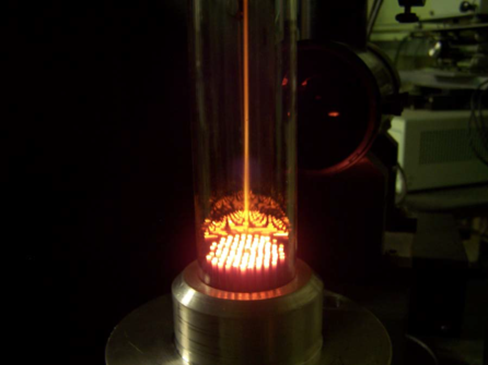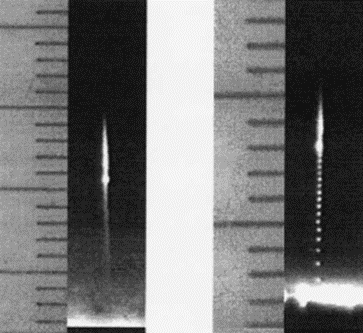High Pressure Combustion Lab
Dr. Richard Yetter, Director
104 Research Building East
University Park, PA 16802
Phone: (814) 863-6375
Email: ray8@psu.edu
Dr. Eric Boyer, Assistant Director
High Pressure Combustion Lab
University Park, PA 16802
Phone: (814) 863-2264
Email: jeb19@psu.edu
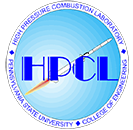
Facilities - Combustion Testing
Solid Fuel Characterization
Opposed Flow Burner
An opposed flow burner is used to test the combustion properties and burning rate of fuels with various oxidizers in a benchtop, atmospheric pressure environment, by creating a stagnation flame between the oxidizer nozzle on top and the fuel on the bottom. An LVDT is used to both feed the fuel pellet and measure the rate at which the pellet is consumed. The OFB can also be used in the opposite configuration where a solid oxidizer is paired with a gaseous fuel.
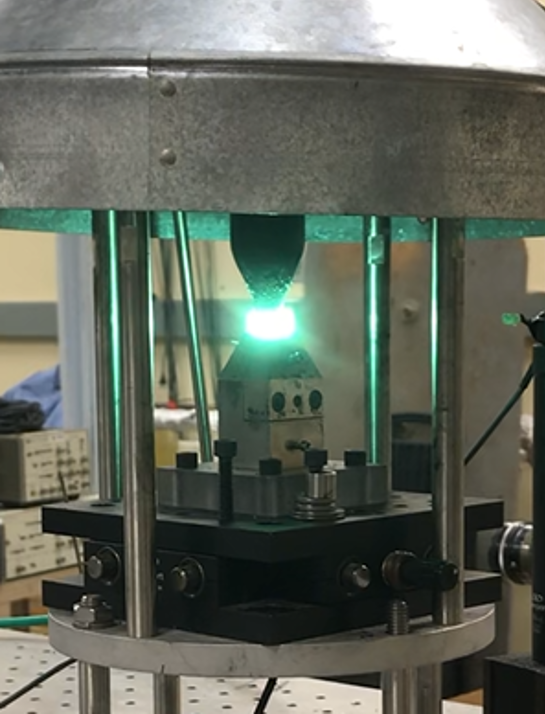
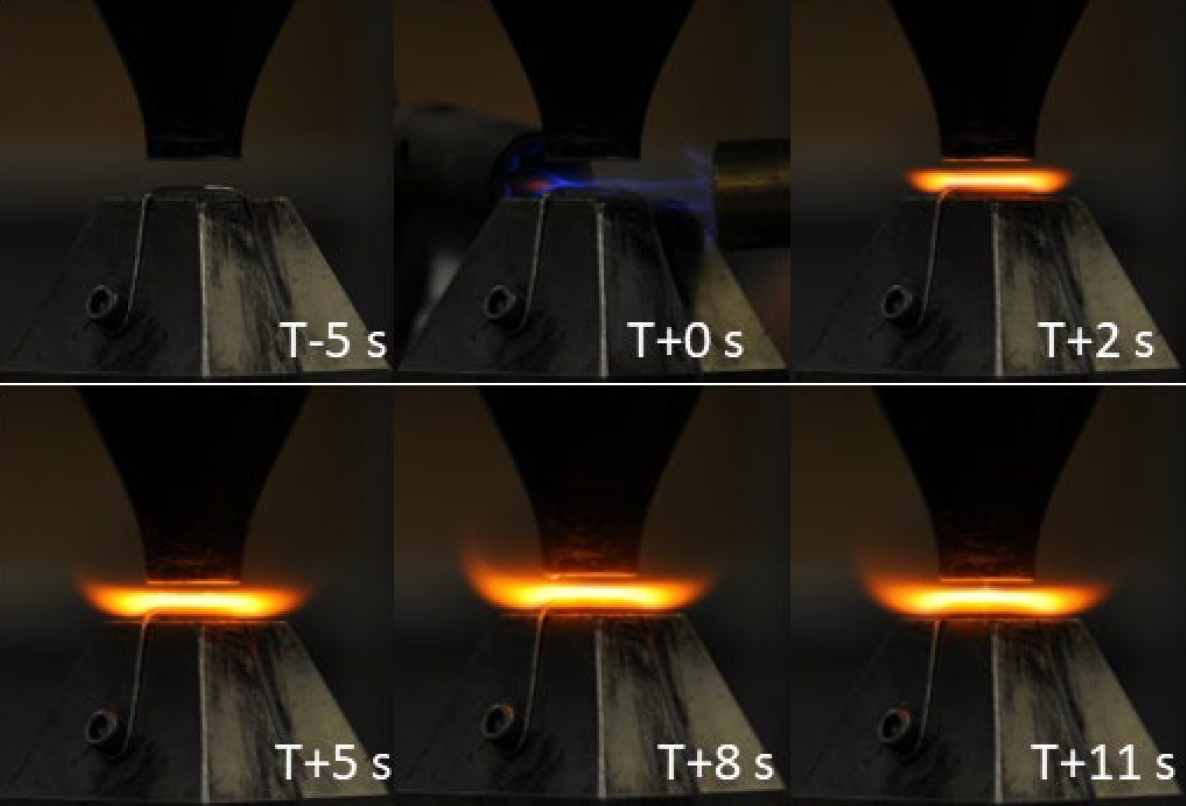
Solid Propellant Characterization
High-Pressure Windowed Strand Burner
A high pressure strand burner with optical access capable of temperature conditioned operation at levels up to 9,000 psi
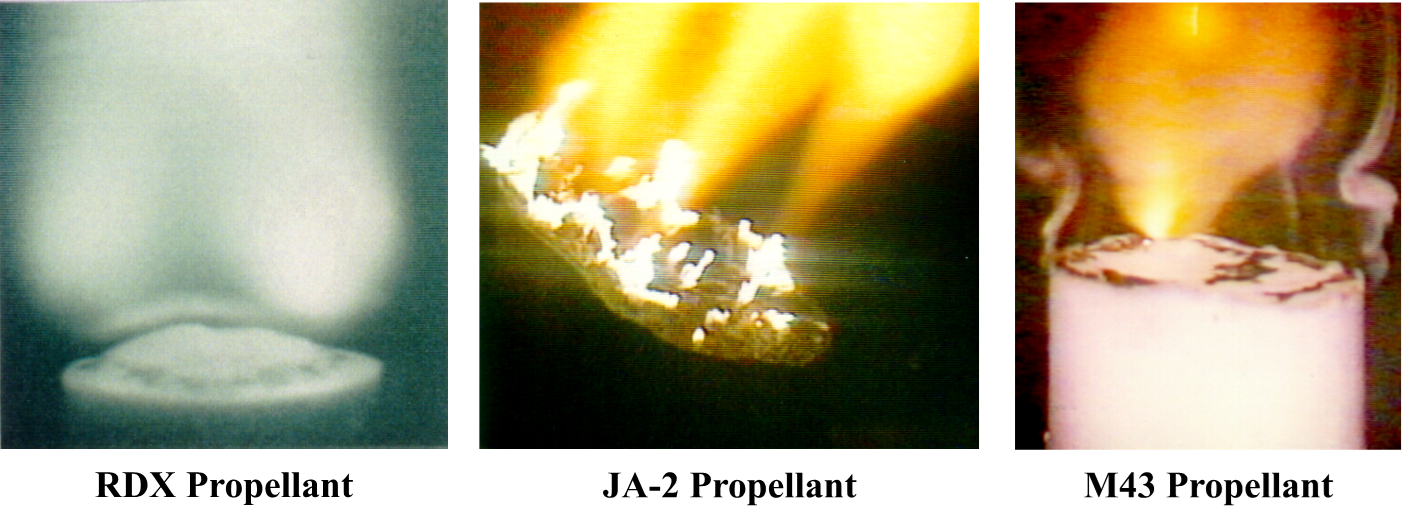
Ultra-High-Pressure Strand Burner
Ultra-high pressure compressors for delivering compressed gases at levels approaching 30,000 psi
Double-Ended Windowed Strand Burner
Double-ended windowed strand burner with controlled gap distance for determining the burning rate dependency on proximity of the opposing burning surfaces. Photograph showing the flame and burned gas trajectories of two JA2 propellant strands (6.35-mm in diameter) burning in close proximity
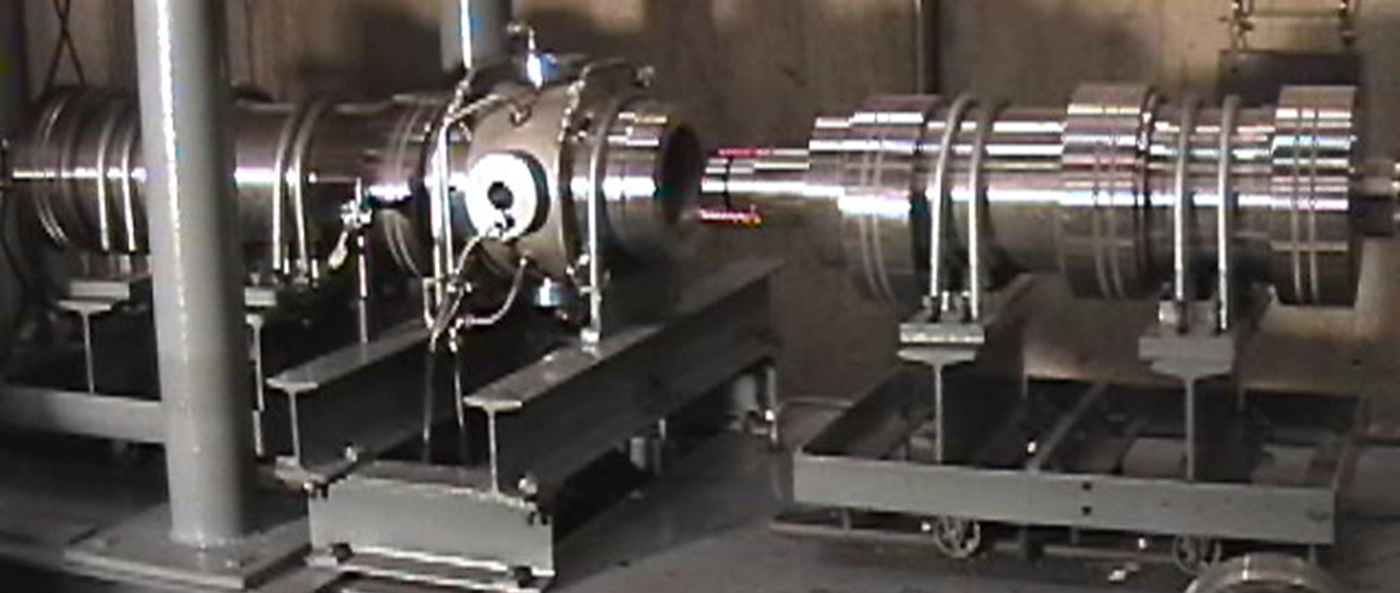
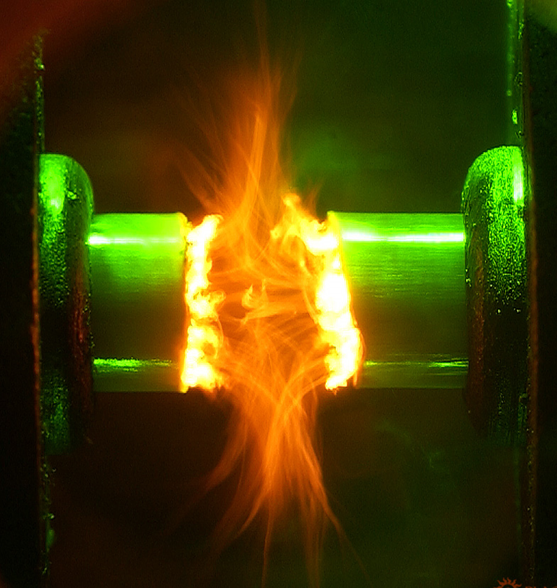
Liquid Propellant Characterization
Liquid Propellant Strand Burner
Liquid propellant strand burner for characterizing monopropellant regression rate and any flashback behavior.
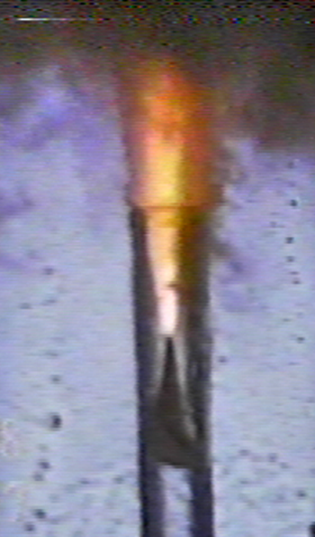
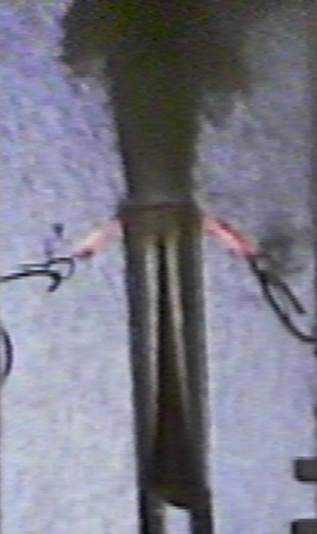
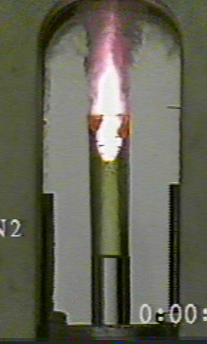
Granular Propellant Characterization
Closed Bombs
“Closed bomb” for solid-propellant burning rate measurements at a broad range of temperatures.
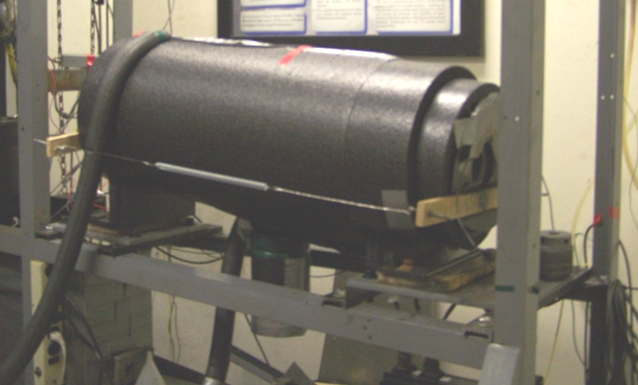
120-mm Mortar Subsystems
Instrumented ignition cartridge of 120-mm mortar systems for pressure wave phenomena study.
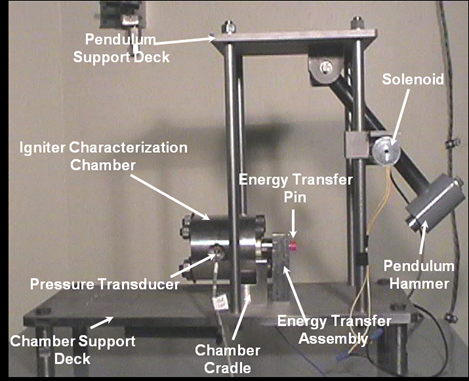
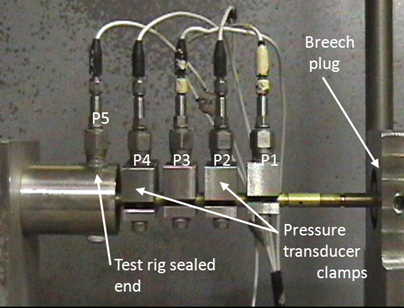
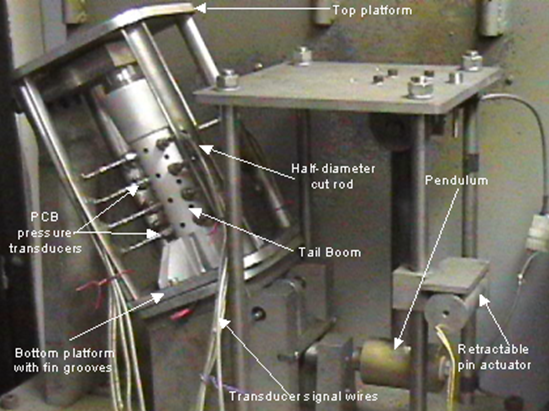
Solid Particle Combustion Characterization
Ballistic Compressor
For evaluating particle/fragment ignition and combustion behavior relevant, a ballistic compressor (one of two at the HPCL) has been used to generate high pressures and temperatures at very high pressurization and heating rates. These rates are representative of conditions found in the post-detonation environment. Before firing (left image below), the selected reactive material fragments are loaded into a windowed test section, which is then sealed. An inert drive gas is pressurized to the desired level and on command a fast-acting valve is opened creating a pressure imbalance on a free piston. The heavy piston then moves down a compression tube toward the test section, compressing the test gas of known composition. Once the pressure at the downstream end of the free piston exceeds the driving force, inertia carries the free piston towards the end of the compression tube, continuing to compress the test gas to a pressure far above that in the driver section. The free piston comes to a halt just before reaching the end of the compression tube (right image below), and then reverses, pushed away from the test section by the high pressure of the compressed test gas towards its initial position. The main pressure spike is very short, on the order of a several milliseconds, and can generate peak pressures of ~100,000 psi and heating rates over 106 K/s. Meanwhile light emission from the test section is recorded and intensity-time traces at specific wavelengths or broadband emission is captured; the onset of a significant level of emission can be considered to indicate ignition of the particles/fragments.

Shock Tube
Shock tunnel (or shock tube) facility for convective or conductive heating of energetic materials and for studying their ignition and fracture behavior, as well as for combustion and fluid dynamic research. The reflective shock tunnel has been utilized to exam both convective and conductive ignition of solid fuel and solid propellant samples. In terms of example test conditions in the convective configuration the test section experiences fairly steady temperatures on the order of 1,300 K for 20 ms with cross-flow velocities of 60 m/s and static pressures of 200 to 300 psi (incident Mach number = 3.42). Using an intensifier the shock strength can be increased, yielding a stagnant higher temperature and pressure behind the reflecting shock wave, for conductive heating experiments. Samples placed in a windowed test section at the end of the intensifier experience pressures on the order of 600 psi and temperatures on the order of 2,100 K for 5 ms. These parameters can be tuned for the desired test section experimental conditions. The windowed test section has been used with diagnostics including LDV (convective case), PMTs for light sensing, pressure, temperature (micro-TCs for fast response), and high-speed video (Schlieren as well).
Flat-flame Burner
Multi-diffusion flat-flame burner with single-particle injection system for studying the ignition and combustion behavior of energetic metallic particles.
